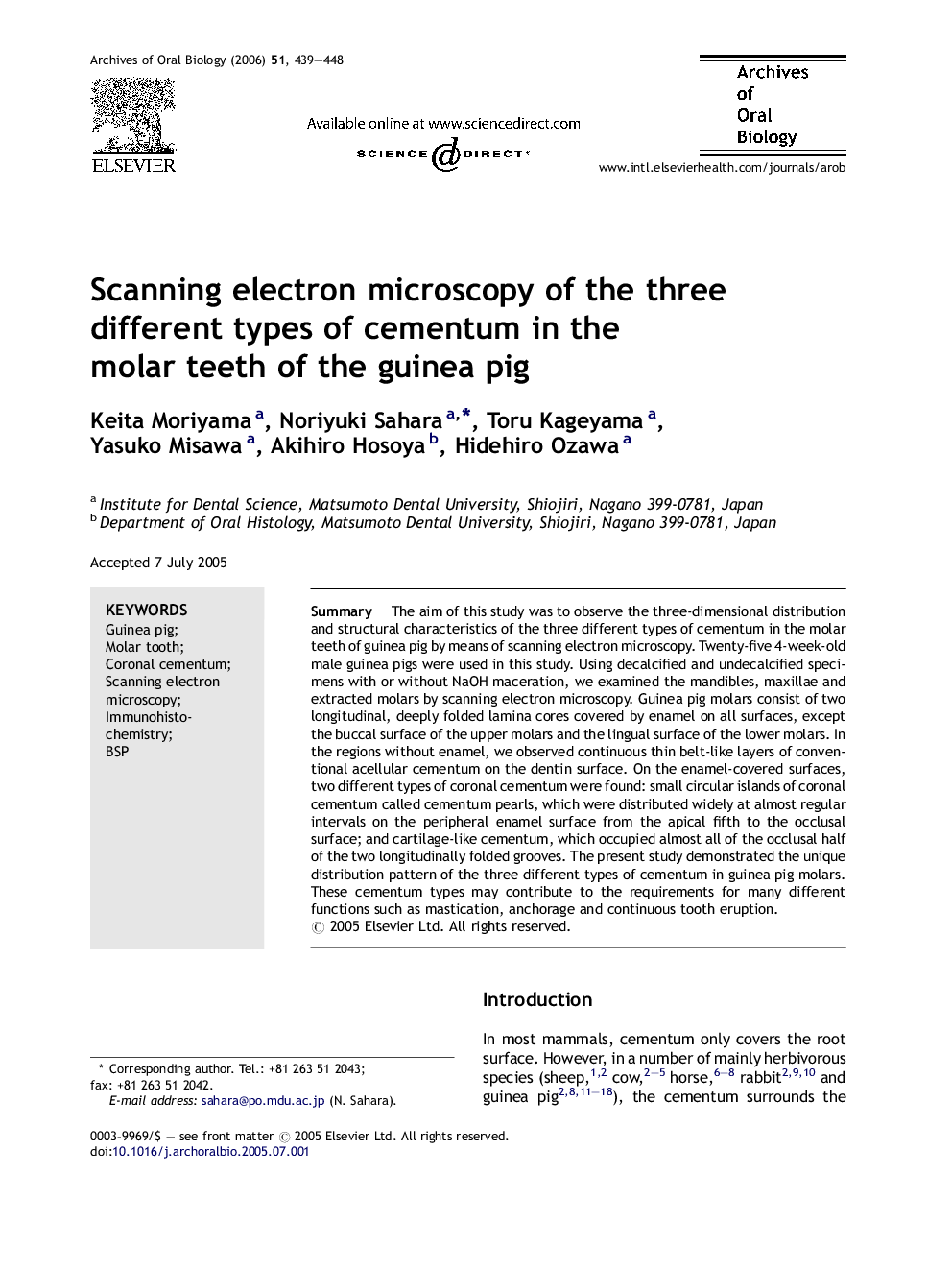| Article ID | Journal | Published Year | Pages | File Type |
|---|---|---|---|---|
| 3122009 | Archives of Oral Biology | 2006 | 10 Pages |
SummaryThe aim of this study was to observe the three-dimensional distribution and structural characteristics of the three different types of cementum in the molar teeth of guinea pig by means of scanning electron microscopy. Twenty-five 4-week-old male guinea pigs were used in this study. Using decalcified and undecalcified specimens with or without NaOH maceration, we examined the mandibles, maxillae and extracted molars by scanning electron microscopy. Guinea pig molars consist of two longitudinal, deeply folded lamina cores covered by enamel on all surfaces, except the buccal surface of the upper molars and the lingual surface of the lower molars. In the regions without enamel, we observed continuous thin belt-like layers of conventional acellular cementum on the dentin surface. On the enamel-covered surfaces, two different types of coronal cementum were found: small circular islands of coronal cementum called cementum pearls, which were distributed widely at almost regular intervals on the peripheral enamel surface from the apical fifth to the occlusal surface; and cartilage-like cementum, which occupied almost all of the occlusal half of the two longitudinally folded grooves. The present study demonstrated the unique distribution pattern of the three different types of cementum in guinea pig molars. These cementum types may contribute to the requirements for many different functions such as mastication, anchorage and continuous tooth eruption.
